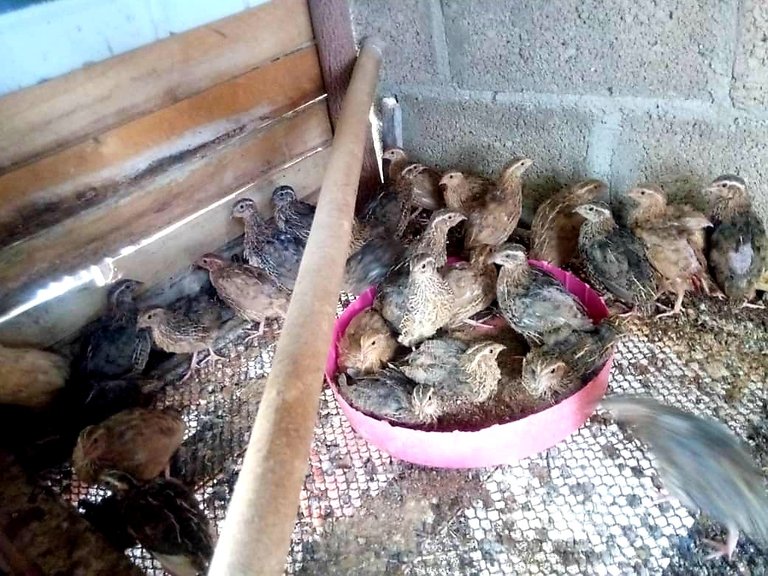
Good afternoon, dear readers, greetings from Gledys. In this opportunity I would like to share with you my personal experience in the management and breeding of quails. This activity is known as coturniculture. There are several breeds, among them: the japonica - japonica, the Korean, the Canadian, and the Pharaonic. Some are used for egg production and others for meat production.
Its nutritional benefits were first known in Asia, China and Japan. In ancient times, they were only raised and consumed (eggs and meat) by emperors, since they were considered exceptional sources of protein and nutrients for human beings and were also considered a delicacy for kings. Later they were taken to the European continent and from there, with the colonization of the Spaniards, to the whole American continent, being Argentina a pioneer in their consumption.
It is necessary to emphasize that the japonica - japonica breed is the one with the highest egg production, and the rest of the breeds as meat producers. Coturniculture is considered a highly profitable economic activity. Because it is from 45 days after hatching that the monetary capital and labor invested starts to be recovered. This work can be developed by individuals or family groups of low income and with little availability of space (they do not require large physical spaces for breeding) and are easy to manage.
Buenas tardes, apreciados lectores, les saluda Gledys. En esta oportunidad quiero compartir con ustedes, mi experiencia personal en cuanto al manejo y cría de las codornices. Está actividad se conoce con el nombre de: coturnicultura. Existen varias razas, entre ellas a citar: la japónica - japónica, la coreana, la canadiense, y la faraónica. Unas, se usan con fines de producción de huevos y otras, con fines cárnicos.
Sus bondades alimenticias se conocieron por primera vez, en el continente asiático, China y Japón. En los tiempos de la antigüedad, sólo eran criadas y consumidas (huevos y carnes), por los Emperadores puestos que son consideradas fuentes de proteínas y nutrientes, excepcionales,para el ser humano y; además consideradas manjar para reyes. Posteriormente fueron llevadas, al continente europeo y, de allí, con la colonización de los españoles, a todo el Continente americano, siendo Argentina, pionera en su consumo.
Es necesario resaltar, que la raza japónica - japónica es la de mayor producción de huevos, y; el resto de las razas como productoras de carne. La coturnicultura, es considera una actividad económica altamente rentable. Porque es partir de los 45 días de nacidas, que se empieza a recuperar el capital monetario y mano de obra invertido. Labor que puede ser desarrollada por personas o grupos familiares de bajos recursos y con poca disponibilidad de espacio (no ameritan espacios físicos grandes para su crianza) y son de fácil manejo.
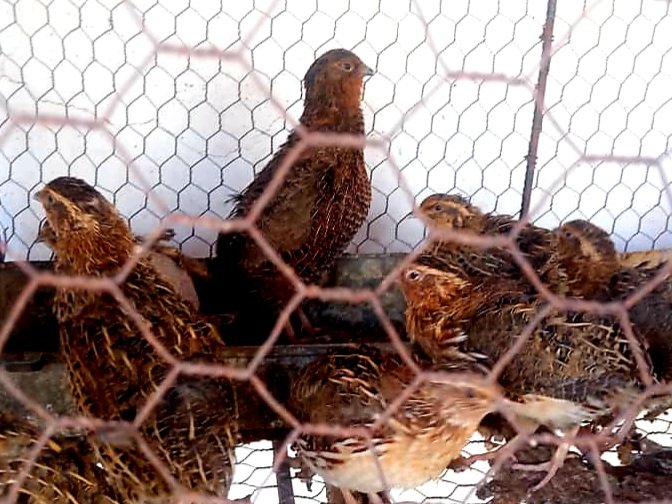
The breeding of these birds can be carried out in cages placed in the form of modules or batteries measuring: 1 meter wide by 50 centimeters deep and 25 centimeters high, where 40 birds per cage can fit. Considering that they must have good feeding and drinking troughs, with particular emphasis on the supply of clean, pure and constant water, and that they do not suffer from thirst, in order to favor the greatest possible egg production.
These animals begin to lay their first eggs at around 45 days of age, reaching sexual maturity at 2 months of age, with a percentage of 70% and 80% daily production. Their useful life is estimated to be approximately 18 months. I share below, outstanding characteristics between male and female.
The female can weigh up to 130 gr. The color of the plumage on the chest is white with a black dotted and the cheeks are pale cream or pale. She is larger in size compared to the male. The male is distinguished by its weight, being about 20 gr less than the female, it is smaller and the color of its plumage on the chest, throat and cheek is dark brown or brown.
La cría de estás aves se puede llevar a cabo en jaulas colocadas en forma de módulos o baterías que miden: 1 metro de ancho por 50 centímetros de profundidad y 25 centímetros de alto, donde caben 40 ejemplares por jaula. Considerando que deben gozar de buenos comederos y bebederos, poniendo particular énfasis, en el suministro de agua, constante limpia y pura, y; que no padezcan de sed, para así; favorecer la mayor producción de huevos posible.
Estos animales, comienzan sus primeras posturas alrededor de los 45 días de edad, alcanzando su madurez sexual, a partir de los 2 meses, con un porcentaje de 70% y 80% diario en la producción. Su vida útil está estimada hasta los 18 meses aproximadamente. Comparto a continuación, características sobresalientes entre macho y hembra.
La hembra puede llegar a pesar hasta 130 gr. El color del plumaje en el pecho, es de un color blanco con un puntillado negro y los cachetes o mejillas son color crema pálido o pálidos. Ella, es de mayor tamaño en comparación con el macho. El macho se distingue, por su peso, siendo unos 20 gr menos con respecto a la hembra, es de menor tamaño y, el color de su plumaje en el pecho, garganta y mejilla es marrón oscuro o color café.
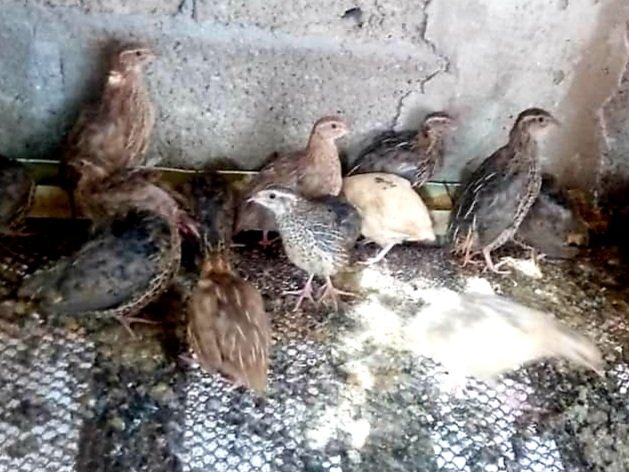
The male emits a characteristic and singular sound or song in it, from 2 months of age. The cloaca area (genital area) of this specimen is bulging, with little plumage around it and an intense pink color, and when pressure is exerted on this area, a white foamy liquid, known as sperm, is expelled.
It is at this stage (sexual maturity) that the male uses his song to stimulate estrus in the female. Due to the domestication process, the quail does not hatch, therefore, to multiply them, it is necessary to resort to incubation. Eggs hatch between 14 and 17 days. The chicks are called Cotopollos, in their first days of life.
Cotopollos must be reared at a temperature of 35 degrees Celsius within the first 18 days of hatching. Considering, the use of artificial light during the day and night. This process is known as rearing. During this time, they should be fed with processed starter feed, which has a minimum of 24% and 26% of crude protein.
El macho emite un sonido o canto característico y singular en él, a partir de los 2 los meses de edad. El área de la cloaca (área genital), de éste ejemplar se observa abultada, con poco plumaje alrededor y de un color rosado intenso.Y, al ejercer presión en dicha zona, es expulsado un líquido blanco espumoso, conocido como esperma.
Es en ésta etapa (madurez sexual) que el macho usa su canto, para estimular el celo en la hembra. Debido al proceso de domesticación,la codorniz, no se enclueca, por tanto; para multiplicarlas, hay que recurrir a la incubación. Los huevos eclocionan entre los 14 y 17 días. Los polluelos reciben el nombre de Cotopollos, en sus primeros días de vida.
Los cotopollos deben criarse a una temperatura de 35 grados centígrados, dentro de los primeros 18 días de nacidos. Considerando, el uso de luz artificial en el día y la noche. Este proceso es conocido como levante. En este tiempo, deben alimentarse, con alimento procesado iniciador, que tenga como mínimo un 24% y 26% de proteínas crudas.
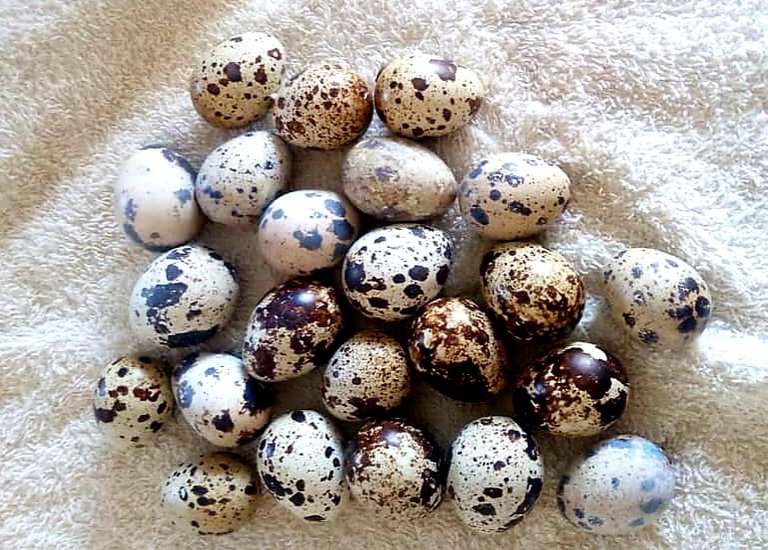
After this period of time, and up to 42 days, they enter the pre-laying cycle. This is when they begin to be fed: layer feed, whose percentage of crude proteins reaches 18%. I recommend, from experience: That in the laying period, it is suggested to administer feed with a minimum of 24% protein.
The quail egg has an advantage over the hen's egg, since it has 0.02% cholesterol and the hen's egg has 7%. Quail eggs contain 5 to 7 times more iron and vitamins than chicken eggs. Because of these properties, its consumption is recommended for people with arterial hypertension, hypercholesteronemia, anemia, debilitating or deficiency diseases, due to deficiency in the absorption of vitamins, iron and proteins, that is, in cases of avitaminosis.
There are countries in which the gastronomic culture of consumption of this item is of high incidence. This factor becomes a favorable characteristic for the producer, at the moment of placing his products in the market, due to the wide demand for them. But there are also countries like Venezuela, where there is a certain degree of ignorance and little consumption of it. I point this out in order to encourage entrepreneurship, breeding and management of this livestock line. With this, we would be contributing to improve the nutrition and quality of life of a nation. In generating sources of work and income from home. And, in this way, establish the culture of production and independent work. I bid you farewell for today, your friend Gledys.
Posterior a este lapso de tiempo, y; hasta los 42 días, entran en el ciclo de prepostura. Donde se le comienza a suministrar alimento: ponedora, cuyo porcentaje de proteínas crudas alcanza los 18%. Recomiendo, por experiencia : Que en el periodo de puesta, se sugiere administrar alimento con un 24% mínimo de proteínas.
El huevo de la codorniz, tiene ventaja, con respecto al de la gallina, puesto que posee, un 0,02% de colesterol y, el de la gallina un 7%. El huevo de codorniz, contiene 5 a 7 veces más, hierro y vitaminas que el huevo de gallina. Por estás propiedades, se recomienda su consumo, en personas con hipertensión arterial, hipercolesteronemia, anemias, enfermedades debilitantes o carenciales, por déficit en la absorción de vitaminas, hierro y proteínas, es decir en casos de avitaminosis.
Existen países, en los cuales la cultura gastronómica del consumo de este rubro, es de alta incidencia. Este factor se convierte en una característica favorable para el productor, al momento de colocar sus productos en el mercado,por la amplia demanda de los mismos. Pero también hay países como Venezuela, donde existe cierto grado de desconocimiento y poco consumo del mismo. Señalamiento que hago, en aras de incentivar al emprendimiento, cría y manejo, de éste renglón pecuario. Con ello, estaríamos contribuyendo, en mejorar la alimentación y calidad de vida de una nación. En generar fuentes de trabajo, e ingresos, desde el hogar. Y, de esta manera, establecer la cultura de la producción y el trabajo independiente. Me despido por hoy, su amiga Gledys.
All photographs are my own/Todas las fotografías son propias
The rewards earned on this comment will go directly to the person sharing the post on Twitter as long as they are registered with @poshtoken. Sign up at https://hiveposh.com.
Congratulations @gledysvasquez! You have completed the following achievement on the Hive blockchain and have been rewarded with new badge(s):
Your next payout target is 250 HP.
The unit is Hive Power equivalent because post and comment rewards can be split into HP and HBD
You can view your badges on your board and compare yourself to others in the Ranking
If you no longer want to receive notifications, reply to this comment with the word
STOPTo support your work, I also upvoted your post!
Check out the last post from @hivebuzz:
Support the HiveBuzz project. Vote for our proposal!
But what about the text, @gledysvasquez? What articles did you use for specific information like this -
Please make sure you include sources and attribute text that is not your own in future posts. Thank you.
Thanks for the information, but I preferred to remove that paragraph, but if I do the same, I will use its respective source.
But that's the problem, @gledysvasquez - most of your text is taken from other articles - a little bit from one, a little from another, and so on. Some of the source material links are -
https://www.informeagricola.com/la-cria-de-codorniz-y-sus-beneficios/ https://hablemosdeaves.com/cria-de-codorniz-ponedora/
https://agrotendencia.tv/agropedia/la-cria-de-codorniz/
And the paragraph you deleted was actually taken/lightly rewritten from two different places -
Yours:

Taken from:
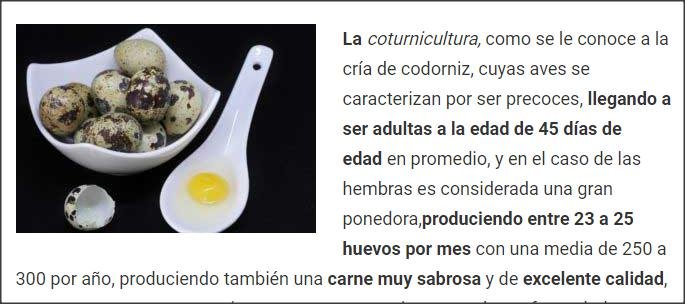
I'm pointing this out so that you are aware that this is not an acceptable practice here on Hive. Please write original content (not reword someone else's work), and cite when you directly quote.
Sorry for the inconvenience, it will not happen again, I know that the people who have helped me to manage this platform, informed me that I could not do that, but I made the mistake of using some important data in the publication, but I will have to make my next post totally original.
I apologize again, and at this moment I am redrafting this article, because I would like to change everything, although I will still change what I have already written.
I'm sorry, although it's late, I made the whole article 100% original, although the previous one most of the text was mine, but I made the mistake in the beginning. You can also verify the authenticity of the text. Thank you and greetings !
a very informative read and i have to agree that quail eggs are definitely delicious 😄 though i've never tried their meat before, very curious, thank you for sharing about this!
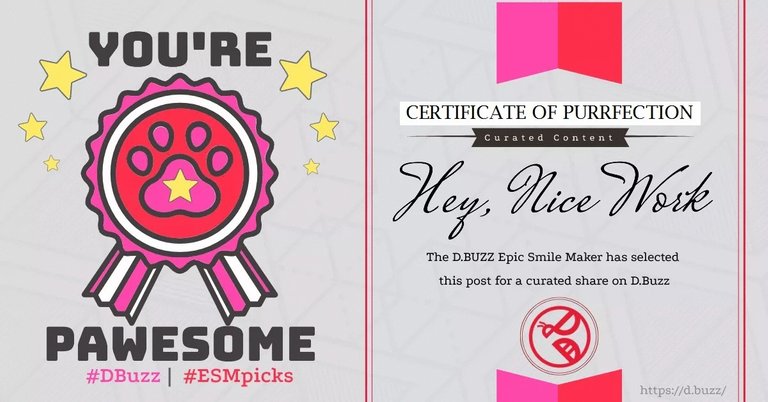
https://d.buzz
!ALIVE
@gledysvasquez! You Are Alive so I just staked 0.1 $ALIVE to your account on behalf of @ilovewintergem. (3/10)
The tip has been paid for by the We Are Alive Tribe through the earnings on @alive.chat, feel free to swing by our daily chat any time you want.
